Explore the most family-friendly European countries offering digital nomad and freelancer visas for remote workers with kids. Learn about cost of living, income requirements, education, healthcare, LGBTQ+ inclusion, pet relocation and what it takes to relocate to Europe with your family and work remotely.
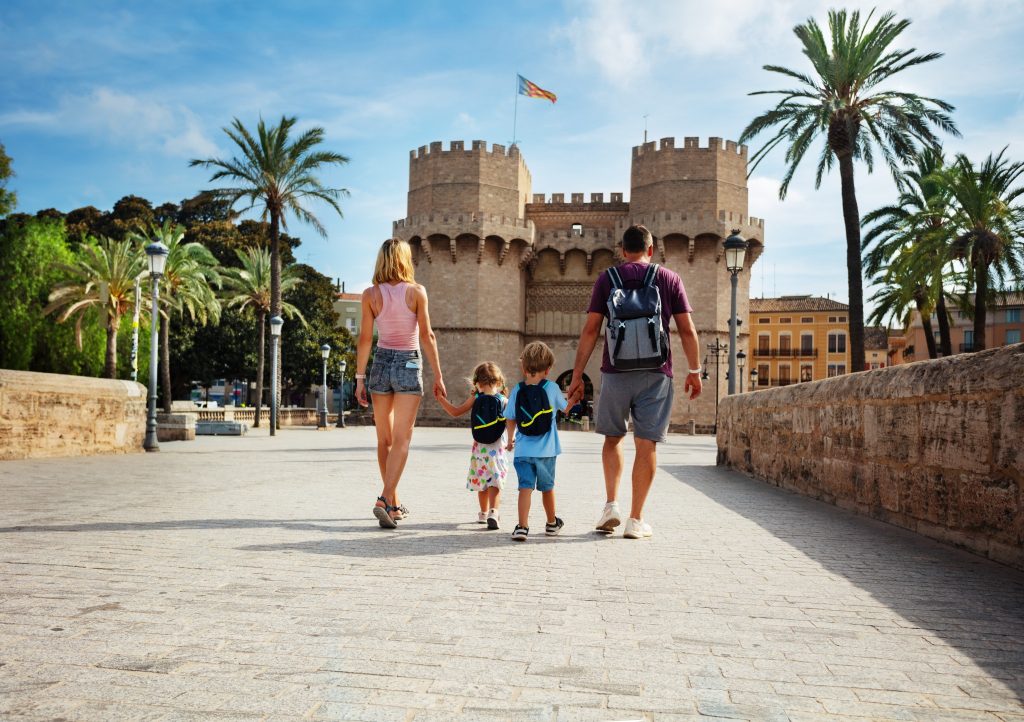
When people hear the term digital nomad, they often picture a young solo traveler with a laptop on a beach — but that image doesn’t reflect the growing number of families working remotely who are now rethinking what it means to live, work, and thrive. I’m one of them. I’m a single mom with two teenagers — one of whom is on the autism spectrum — and we’re actively planning a move to Europe. I have visited many European countries, many of them with my kids and I fell in love with the continent from the first time I set foot in the old world but never had I considered moving there with kids was an option, until recently. I have written before about traveling through Europe as a freelancer but now I am focusing on moving to Europe with my family long term. This article is for families like mine who are looking beyond the outdated “American Dream” and exploring what other countries can offer in terms of safety, education, healthcare, inclusivity, women’s rights and quality of life.
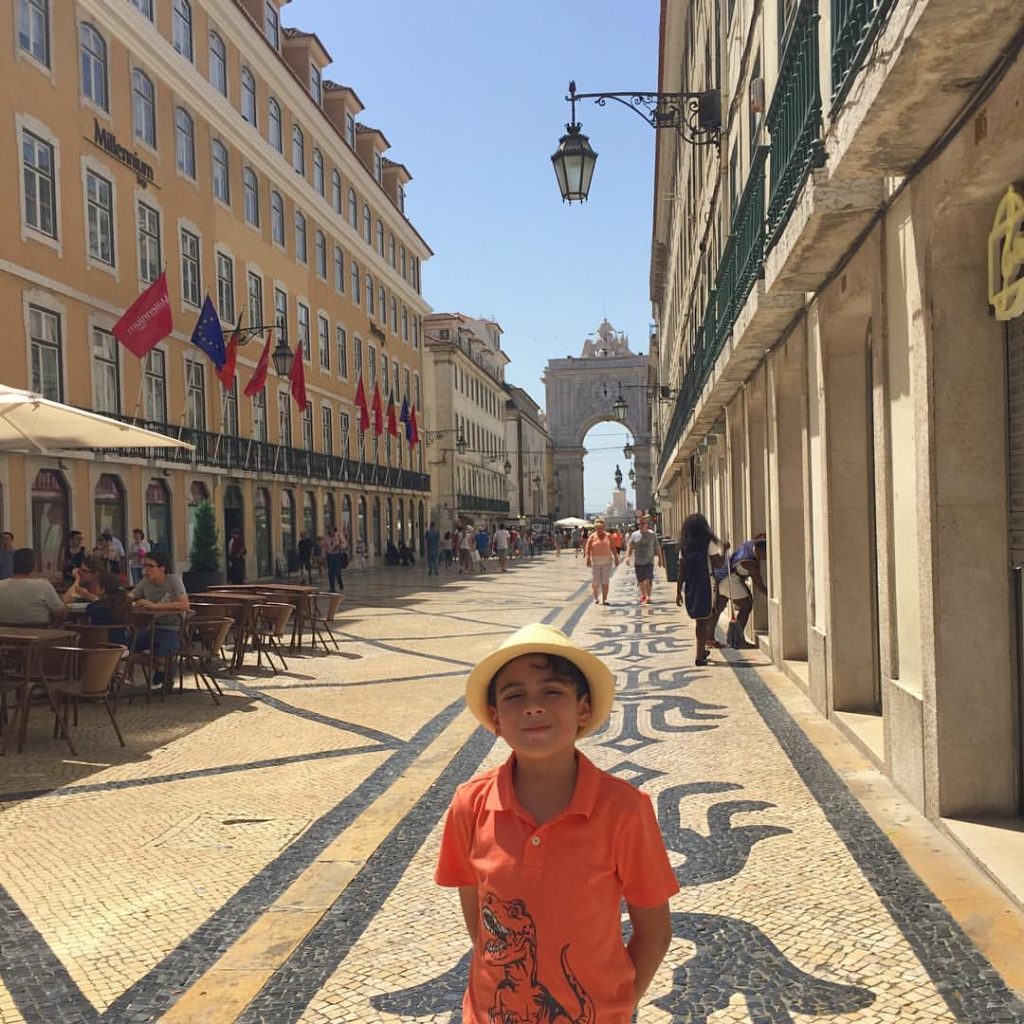
Over the past few months, I’ve been researching the best digital nomad visas for families — and what I’ve discovered has completely changed my perspective. While I’ve worked remotely for years, I never seriously considered that moving abroad could be a viable long-term option for families. But it is. In fact, many countries are now offering digital nomad visas with dependents, and some are far more family-friendly than others. This article focuses specifically on those options, based on what matters most to families: access to international schools or affordable universities, walkable cities, reliable healthcare, inclusive environments for neurodivergent and LGBTQ+ children and youth, and a chance to build a better future without sacrificing stability
We are moving with our two golden doodles and we know that most American families have pets, who they consider to be part of their family like we do. That is why I’m also including what it’s like to move with dogs or cats — from entry requirements to the cost of flying them over and finding pet-friendly rentals once you arrive. (If you are considering moving abroad please do not leave your pets!)
Why Europe Offers the Best Digital Nomad and Freelancer Visas for Families in 2025
If you’re a family with the freedom to work remotely, Europe offers something uniquely valuable: the ability to live in a place where safety, healthcare, education, and quality of life are often treated as public priorities — not private luxuries. While many digital nomads gravitate toward countries in Southeast Asia or Latin America for the low cost of living, Europe stands out for families looking for long-term stability and support.
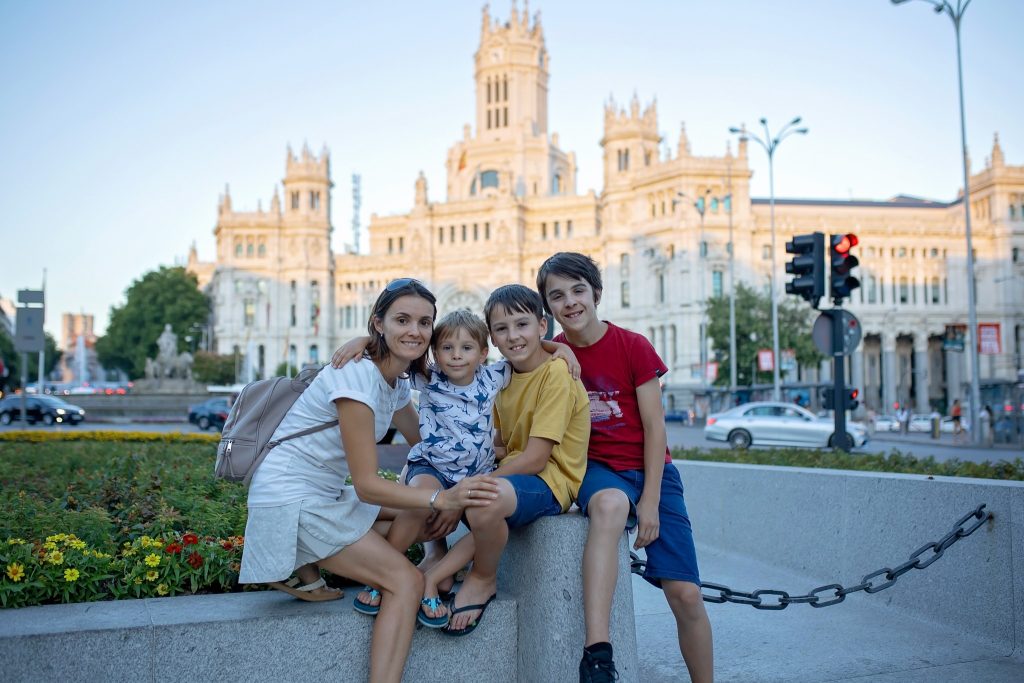
Many European countries now offer digital nomad visas with dependents, freelancer visas, or other pathways that allow you to bring your children and stay longer than a typical tourist visa. And unlike more transient nomad hubs, these countries often come with strong infrastructure: walkable cities, accessible transportation, clean public spaces, excellent private insurance options, and affordable or even free higher education.
That’s a major reason why we’re choosing to focus this guide specifically on Europe’s most family-friendly digital nomad visa options in 2025. For families like mine — and perhaps yours too — the goal isn’t just to work remotely with a job like teaching English abroad, but to build a better everyday life. Whether that means enrolling your teen in college without racking up debt, walking to a local market without needing a car, or living in a place where your kids can feel safe being themselves, Europe offers a compelling alternative. Many digital nomads also use their time abroad to continue studying, write research papers or even complete a postgraduate thesis. The flexibility of remote living makes it easier to schedule deep-work sessions in quiet cafés, libraries or co-working hubs with high-speed internet. If you or your older children are working on academic research, looking for thesis writing help online can be a useful way to stay organized and supported while living overseas. It is a great example of how relocating with a Digital Nomad Visa can open doors not only for work and travel, but also for education and long-term personal growth.
And while no place is perfect, several countries in Europe do offer realistic paths for families who are freelancers, contractors, or self-employed professionals — and want to live somewhere that aligns with their values, their budget, and their hopes for the future.
How to Use This Guide to Find the Best Digital Nomad and Freelancer Visas for Families in Europe
If you’re a parent working remotely — whether you’re freelancing, running your own business, or contracting with clients online — this guide is for you. It’s designed to help families like ours figure out where in Europe we might be able to live, legally and sustainably, using digital nomad or freelance-style visas.
This guide does not focus on temporary travel, youth gap years, or minimalist backpacking lifestyles. It’s for families who want to build a life abroad, either for a year or for the long term — and need real answers about income requirements, education, healthcare, housing, and what life might actually look like on the ground.
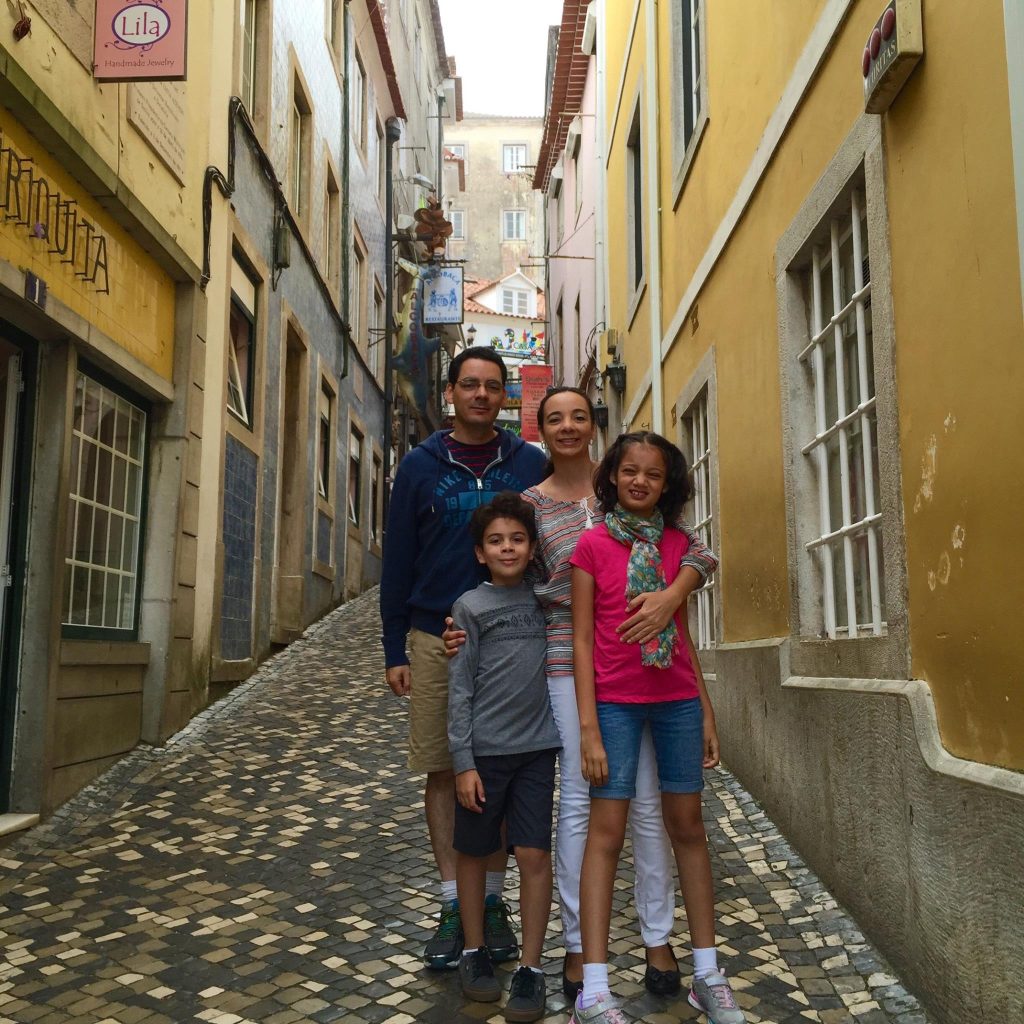
We’ve compared countries based on the following key factors:
- Visa Type & Eligibility: Whether it’s a digital nomad visa, a freelance visa, or another type of remote work permit — and whether it allows for dependents (spouses and kids).
- Monthly Income Requirement: How much you need to earn to qualify, plus how that amount increases if you’re applying with children or a partner.
- Cost of Living for Families: Including real examples of rental prices (usually for a 3-bedroom furnished apartment in a mid-sized city), estimated monthly budgets for things like groceries, transportation, internet, and healthcare.
Note: These are average estimates and may vary based on location, lifestyle, apartment type, and season. Larger cities like Madrid and Barcelona may be more expensive, while smaller towns may be more affordable. - Education: Whether the country has affordable public universities, international schools, or homeschooling flexibility.
- Healthcare: We look at access to private insurance (usually a visa requirement), and whether the country is known for high-quality medical care.
- Walkability & Infrastructure: Can you live without a car? Are cities well-connected and safe for teens to get around independently?
- Pet Relocation: Can you bring your dog or cat? How much does it cost? Is it easy to find pet-friendly rentals?
- Inclusivity & Family Culture: Are women’s rights protected? Is the country supportive of diverse family types, including those with LGBTQ+ members or children with disabilities?
You’ll also find personal insights throughout based on my own journey and priorities as a single mom of two teens as well as practical takeaways you can use to start building your own relocation plan.
Quick US tax note for American families abroad: the IRS taxes worldwide income, so you’ll still file annually from Europe and may need to submit FBAR (FinCEN 114) and, in some cases, FATCA Form 8938. Many families use expat-focused software to claim benefits like the Foreign Earned Income Exclusion or foreign tax credits and avoid double taxation, expatfile.tax streamlines this with step-by-step guidance for expats and digital nomads. Building your relocation budget? Factor in annual filing costs and deadlines (including automatic extensions for expats).
There’s no one-size-fits-all answer. But my hope is that this guide makes the idea of moving abroad with your family feel more possible — and helps you start narrowing down the countries that make the most sense for you.
Spain: A Family-Friendly Digital Nomad Destination with Culture, Safety, and Stability
Spain was the first country I seriously considered when we began exploring our options to move abroad — and it’s still one of our top choices. When we visited with the kids a few years ago we found that Spain is a great family destination and itchecks off so many boxes for families looking for a better life: walkable cities, an inclusive culture, affordable higher education, universal healthcare, and a strong focus on quality of life. My brother lives in Valladolid, Spain, and I’ve watched my nephew, who has Down syndrome, thrive in an environment where he can walk safely to class, build community through accessible programs, and live with a level of independence that would be hard to achieve in the U.S. For our family Spain is also a top choice as we are dual citizens (Guatemala and U.S.) and Spain has a fast track for citizenship for citizens of it’s former colonies including Latin American countries and the Philippines requiring only two years of residency instead of ten. My kids also speak some Spanish so learning the language at a level where they can attend college in Spanish will not require as much time and effort.

Spain offers a digital nomad visa with dependents, officially launched in 2023 as part of the country’s Startup Law. This visa is available to remote workers employed by non-Spanish companies or freelancers who have long-term contracts with foreign clients. It allows families to live and work legally in Spain while enjoying access to healthcare, education, and long-term residency options. The process can be bureaucratic and time-consuming, but for families who meet the requirements, Spain offers an excellent foundation for a new chapter.
Spain’s Digital Nomad Visa: Key Details for Families
- Income Requirement: €2,646/month (200% of Spain’s minimum wage) for the main applicant. For dependents:
- Add 75% (€994/month) for the first dependent
- Add 25% (€331/month) for each additional dependent
- For a family of four (one adult, one partner, two kids), the required income is approximately €4,302/month
- Visa Duration:
- 1 year if applied from outside Spain
- Up to 3 years if applied from within Spain (renewable for up to 5 years)
- Eligible for citizenship after 10 years (2 if you also have citizenship from a Latin American country or the Philippines)
- Bring Dependents: Yes — includes spouse/partner and children
- Healthcare: Private health insurance with no copays or deductibles is required. Plans cost around €60–€150 per adult per month
- Internet Speed: 150–300 Mbps (fiber optic widely available)
- Education:
- Public universities (price for international students) : €6,000–€8,000 per year for bachelor’s degree
- International schools (for younger children): €4,000–€10,000 per year per child
- Spain offers inclusive education and growing support for neurodivergent children, though options vary by region
- Pet-Friendly Factor: Spain allows pets to be imported with a microchip, rabies vaccine, and health certificate. Pet-friendly rentals are fairly common in mid-sized cities, and flying a medium-sized dog from the U.S. costs around €900–€1,200 depending on airline and crate size.
Estimated Monthly Cost of Living for a Family of Four (2025)
Costs are based on a mid-range lifestyle in a mid-sized city like Valencia. Living in cities like Madrid or Barcelona may increase housing and lifestyle costs, while smaller towns can be more affordable.
- Furnished 3-bedroom apartment: €1,200–€1,700
- Groceries: €1,000
- Utilities (electricity, water, gas, garbage): €200
- Internet and cell phones: €80
- Transportation (public or gas for one car): €200
- Private health insurance: €250
- Entertainment, dining out, subscriptions, and kids’ activities: €300
Total estimated monthly cost: €3,530
Note: These are average estimates and may vary based on location, lifestyle, apartment type, and season. Larger cities like Madrid and Barcelona may be more expensive, while smaller towns may be more affordable.
Estimated One-Time & Annual Costs
Initial relocation costs for a family of four:
- One-way flights to Spain: €3,200 (prices may be a lot lower depending on location of departure and time of the year)
- Shipping household goods (half-container): €5,000
- Visa fees, translations, apostilles: €500 (this price is if you do it yourself, price for visa processing services for a family of four is around €4,000 which I would recommend)
- First and last month rent deposit: €3,000 (add one more month’s rent if you will be using a realtor to help you find your apartment, which I would recommend)
Total initial move-in cost: €11,700
Annual roundtrip travel back to the U.S.:
- Estimated cost: €4,000
Total estimated first-year cost (living + move + U.S. travel): €58,060
Estimated yearly cost after that (including one U.S. trip): €46,360
Advantages for Digital Nomad Families
Inclusive and safe environment
Spain consistently ranks among the most LGBTQ+ inclusive countries in the world. It also offers walkable cities, reliable public transportation, and strong community-focused values. From young children to teens and neurodivergent adults, Spain is generally welcoming and supportive — especially in mid-sized cities like Valencia and Málaga.
Affordable and accessible healthcare and education
While you’ll need private health insurance for your visa, it’s far more affordable than U.S. insurance, and you can access high-quality care. The country also offers a range of educational opportunities — from international schools to low-cost university degrees — without the crushing student debt so common in the U.S.
Long-term lifestyle and residency options
The Spanish digital nomad visa can eventually lead to permanent residency. You don’t need to leave after a year or two, which is ideal for families seeking stability. This visa offers a path to truly settling in and building a future.
Disadvantages
Bureaucratic challenges
Spain is known for its paperwork and slow administrative processes. You’ll need patience, especially when applying for visas, registering with local municipalities, or setting up healthcare.
Strict employment requirements
This visa is not designed for casual freelancers or influencers relying on ad revenue or affiliate links. You must show active contracts with companies outside Spain and include written permission to work remotely from within the country. The companies must have been operational for at least one year.
BEST FOR: Families with steady remote work contracts seeking long-term residency, excellent healthcare, strong public safety, and a lifestyle focused on family, culture, and well-being.
- Excellent option for Hispanic families with dual citizenship as Spain provides a fast track to citizenship in only 2 years for citizens of it’s former colonies (Latin American and other countries like Philippines)
Portugal: A Top Choice for Families Seeking Stability, Safety, and a Path to Residency
Portugal was one of the first countries I looked into after Spain — and for good reason. This country combines many of the things families like mine are searching for: safety, walkability, affordable healthcare, reliable infrastructure, and a slower pace of life that’s ideal for raising kids. Portugal also has one of the most family-friendly digital nomad visa options in Europe, and has long been known for its welcoming attitude toward immigrants, freelancers, LGBTQ+ families, and people from diverse backgrounds. We visited Portugal with my kids a few years ago and we fell in love immediately, from the culture and weather to the food. I often pictured us settling in a city Porto or Coimbra, or maybe even a smaller town in the Algarve — somewhere where my daughter could walk safely to the store or park, and where life could feel a little lighter and easier. You can check out my article about visiting Coimbra with kids to get a better idea of how family friendly this small city near Porto is!

Portugal offers one of the best digital nomad and freelancer visas for families in Europe, officially called the D8 or “residence visa for independent work or remote work.” It’s open to remote contractors and freelancers who work with clients outside Portugal. Dependents can be included in the application, and the visa provides a path to long-term residency and even citizenship. If you’re a U.S. family with remote income and you’re looking for a lifestyle shift, Portugal is definitely worth exploring.
Many families who move to Portugal end up considering homeownership, especially as they settle into the slower pace of life and begin to put down roots. However, there are some nuances to be aware of when trying to purchase a property there, including legal processes, regional differences, and language barriers. The good news is that local buyer agent firms now have a lot of experience doing so, and working with one can make the process much smoother and more transparent for newcomers.

Portugal’s Digital Nomad Visa: Key Details for Families
- Income Requirement:
- Main applicant: €3,280/month (4x Portuguese minimum wage, which is €820 in 2025)
- Add 50% (€1,640/month) for a spouse/partner
- Add 30% (€984/month) per child
- For a family of four (two adults, two children): total required income is approximately €6,888/month
- Visa Duration:
- Initial residency: 2 years
- Renewable for an additional 3 years
- Eligible for permanent residency after 5 years
- Bring Dependents: Yes — includes spouse/partner and children
- Healthcare: Private insurance is required for your application, but once you are registered as a resident, you may access Portugal’s public healthcare system, which is heavily subsidized and very affordable
- Internet Speed: 100–300 Mbps in most urban and suburban areas
- Education:
- Public universities (price for international students) : €6,000–€8,000 per year for bachelor’s degree
- International schools: €5,000–€15,000 per year per child, depending on the city and program
- Many cities offer inclusive education programs for neurodivergent and disabled students, though resources vary by region
- Pet-Friendly Factor: Portugal allows pets from the U.S. with proper health documentation and a microchip. Many rentals allow pets, especially in smaller cities and rural areas, and flying a dog from the U.S. typically costs €800–€1,100 depending on the pet’s size and airline policies.
Estimated Monthly Cost of Living for a Family of Four (2025)
These figures reflect an average mid-range lifestyle in cities like Porto or Coimbra, where many families find a good balance between affordability and quality of life. Lisbon is significantly more expensive, while rural towns may offer greater savings.
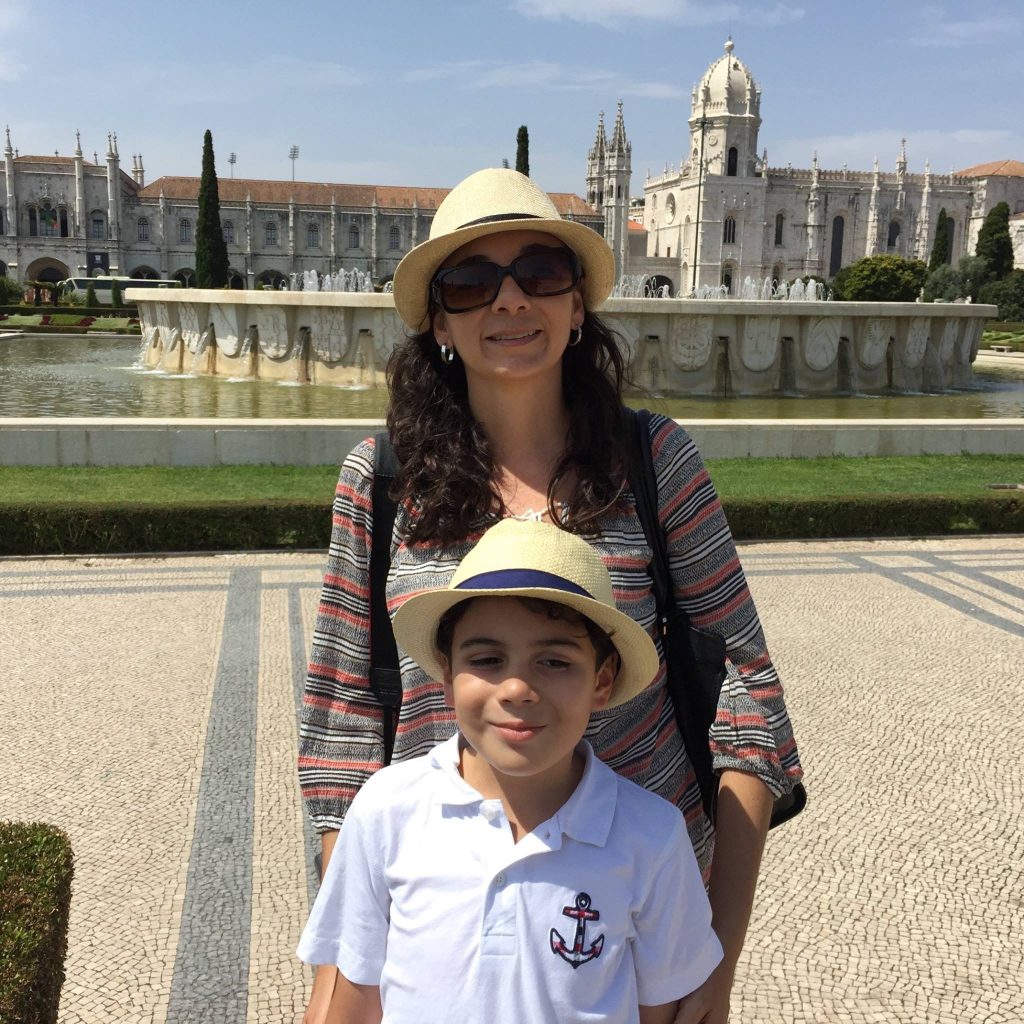
- Furnished 3-bedroom apartment: €1,300–€1,800
- Groceries: €1,000
- Utilities (electricity, water, gas, garbage): €200
- Internet and cell phones: €80
- Transportation (public transit or gas for one car): €200
- Private health insurance: €250
- Entertainment, dining out, subscriptions, and kids’ activities: €300
Total estimated monthly cost: €3,530–€3,830
Note: These are average estimates and may vary based on location, lifestyle, apartment type, and season. Lisbon is one of the most expensive cities in Portugal, while smaller towns and inland regions offer much lower rent and daily expenses.
Estimated One-Time & Annual Costs
Initial relocation costs for a family of four:
- One-way flights to Portugal: €3,200
- Shipping household goods (half-container): €5,000
- Visa fees, translations, apostilles: €600
- First and last month rent deposit: €3,000
Total initial move-in cost: €11,800
Annual roundtrip travel back to the U.S.:
- Estimated cost: €4,000
Total estimated first-year cost (living + move + U.S. travel): €58,160
Estimated yearly cost after that (including one U.S. trip): €47,160
Advantages for Digital Nomad Families
Path to permanent residency and citizenship
Portugal’s D8 visa is one of the few that directly leads to permanent residency after five years, and eventually, citizenship. Families looking for long-term security in Europe may find this especially appealing.
Safe, inclusive, and family-oriented culture
Portugal consistently ranks among the safest countries in the world. It has a strong culture of respect, family values, and tolerance. It’s also one of the most LGBTQ+ friendly countries in Europe, with progressive policies and a welcoming attitude in most cities.
Affordable healthcare and education
Once you’re a legal resident, you can access Portugal’s public healthcare system. Even before that, private health insurance is far more affordable than in the U.S. Public universities are also inexpensive, and the country has a growing network of international schools.
Disadvantages
High income requirement
Portugal’s income requirement is among the highest in Europe — especially for families. For many, this is the main barrier to entry.
Slow bureaucracy and long processing times
Like Spain, Portugal is known for its bureaucracy. You’ll need to be patient when dealing with appointments, paperwork, and visa renewals. Many expats recommend hiring help to navigate the process.
BEST FOR: Families looking for long-term residency, excellent public safety, a low-key lifestyle, and access to affordable healthcare and education in a progressive and inclusive environment.
France: A Family-Focused Lifestyle in the Heart of Europe
France was one of the top countries when I started researching digital nomad visas with dependents, because who doesn’t want to live in Paris? The more I looked into it, the more it stood out — especially for families, although I quickly discovered Paris was not the best option due to the high cost of living but smaller cities like Montpellier stood out as a great option. From world-class healthcare to strong public education, reliable public transportation, and walkable cities filled with history, art, and green spaces, France offers many of the things remote families are looking for. Cities like Lyon, Toulouse, and Montpellier provide a slower pace and more affordable living compared to Paris, while still giving families access to everything they need, including cultural richness, good schools, and safe environments for kids.
While France doesn’t have a formal digital nomad visa, freelancers and remote workers can apply for either the long-stay visitor visa (VLS-TS) or the self-employed visa (profession libérale). These options allow families to live in France legally while working remotely for foreign companies or clients. The process can be more paperwork-heavy than in other countries, but for families looking for long-term European residency with strong public services and a good work-life balance, France is well worth considering.
France’s Self Employed Visa: Key Details for Families
- Income Requirement:
- Minimum: roughly €1,400–€2,000/month per adult
- For families: ideally €3,500–€4,000/month or more to show financial self-sufficiency (no exact family formula provided by government)
- Visa Duration: 1 year (renewable); path to residency after 5 years
- Bring Dependents: Yes — spouse/partner and children can be included
- Healthcare: You must have private insurance for the first year; after that, you can register with the French public system (known for excellent coverage and low cost)
- Internet Speed: 150–400 Mbps in most urban areas
- Education:
- Public universities (price for international students) : €3,000 per year for bachelor’s degree
- Public schools are free and highly rated; many international options available
- France provides structured educational support for neurodivergent children and kids with special needs
- Pet-Friendly Factor: Pets from the U.S. are welcome in France with a microchip, rabies vaccination, and an EU health certificate. Many apartments allow pets, especially outside of Paris, and flights for pets generally range from €800–€1,200 depending on size and airline.

Estimated Monthly Cost of Living for a Family of Four (2025)
Using a mid-sized city like Toulouse or Montpellier as a model:
- Furnished 3-bedroom apartment: €1,300–€1,800
- Groceries: €1,000
- Utilities: €200
- Internet and phones: €90
- Public transport: €150–€200
- Private health insurance (1st year): €250
- Entertainment, dining, and activities: €300
Total monthly cost: €3,290–€3,640
Note: These are average estimates and may vary based on location, lifestyle, apartment type, and season. Paris and the French Riviera are significantly more expensive, while smaller towns and rural areas are much more affordable.
Estimated One-Time & Annual Costs
Initial relocation costs for a family of four:
- One-way flights to France: €3,000
- Shipping household goods (half-container): €5,000
- Visa fees, translations, apostilles: €600
- First and last month rent deposit: €3,000
Total initial move-in cost: €11,600
Annual roundtrip travel back to the U.S.:
- Estimated cost: €4,000
Total estimated first-year cost: €57,280
Estimated yearly cost after that (with one U.S. trip): €46,280
Advantages for Digital Nomad Families
Excellent healthcare and education systems
France’s healthcare system is among the best in the world. After one year of residency, you can access the public system at very low costs. Public education — including university — is high-quality and either free or very affordable, even for international students.
Family-focused culture and inclusive values
France has strong protections for LGBTQ+ families and people with disabilities. In larger cities and university towns, you’ll find support networks, community events, and plenty of resources. Public spaces are family-friendly, and work-life balance is culturally valued.
Path to long-term residency
If you plan to stay long-term, France offers a clear path from a long-stay visa to residency and eventually citizenship after five years. Children can integrate into French schools and communities with support systems in place.
Disadvantages
Not a true digital nomad visa
France requires careful documentation of income, remote work, and housing. It’s not as streamlined as visas in Spain or Portugal, so you’ll need to be thorough and organized.
Cost of living can vary widely
Paris is expensive. If your heart is set on the capital, budget accordingly. Mid-sized cities offer better value but may require adjusting expectations for workspaces, housing size, or community size.
BEST FOR: Families who want strong healthcare and education systems, an inclusive culture, and the chance to settle long-term in a country that balances tradition with modern support services.
Germany: Stability, Education, and Family-Friendly Living
When I first started exploring options for moving abroad as a remote worker with my teens, Germany wasn’t at the top of my list. It’s not usually seen as a go-to destination for digital nomads, but once I learned more about the Freelance Visa (Freiberufler) and how family-friendly the country really is, it quickly became one of our top contenders. Germany may not offer a traditional digital nomad visa with dependents, but its systems — from education to healthcare to public transportation — are so well-designed that once you’re in, the long-term benefits can far outweigh the initial bureaucracy. And if you’re planning to stay connected from day one, using the best eSIM provider for Germany makes it easy to hit the ground running without the hassle of a physical SIM card.
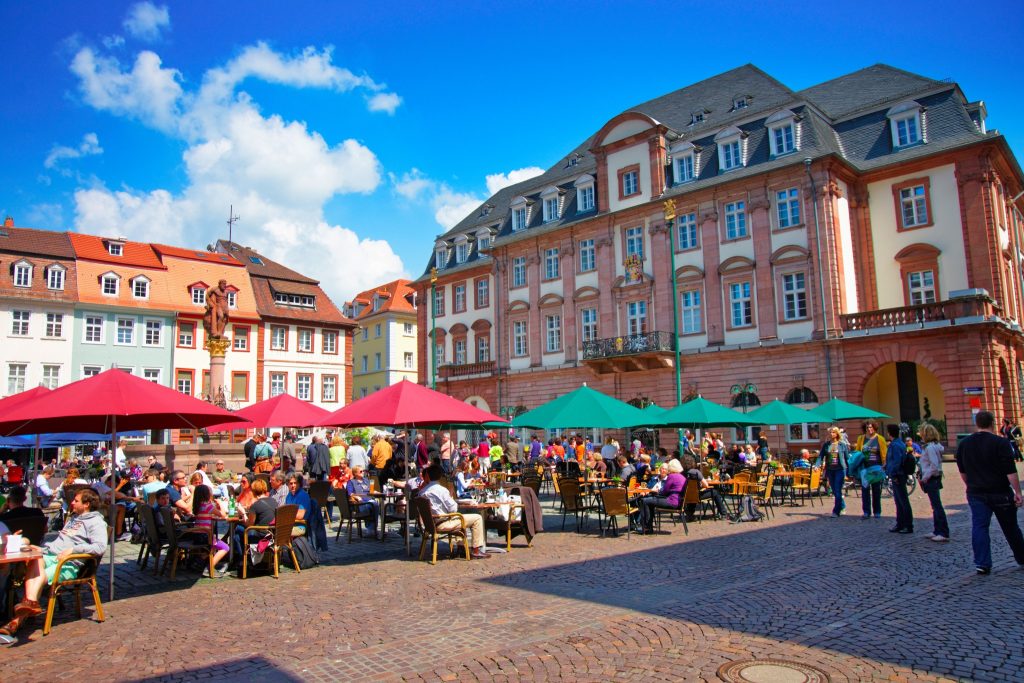
Larger cities like Berlin, Hamburg, and Munich have thriving international communities, cultural richness, and world-class infrastructure. But mid-sized cities such as Freiburg, Leipzig, and Heidelberg are also worth a look for families — they’re often more affordable, highly walkable, and offer great access to parks, public schools, and a slower pace of life. Germany also stands out for its low-cost or nearly free public universities, excellent public healthcare system, and inclusive social policies that make it a safe and welcoming option for many types of families.
Germany’s Freelance Visa: Key Details for Families
- Income Requirement: No fixed amount, but you must demonstrate sufficient income and long-term freelance contracts with international (non-German) clients — usually at least €2,500–€3,000/month for a single adult; expect to show higher income for dependents.
- Visa Duration: Up to 3 years (renewable), with a path to permanent residency after 5 years.
- Bring Dependents: Yes — spouses and children can apply for residence permits as family members.
- Healthcare: Mandatory to have health insurance. Germany offers both public and private plans; public health insurance is accessible once your residence is registered.
- Internet Speed: 100–300 Mbps in most urban areas, reliable and widely available.
- Education:
- Public universities: Usually free or up to €1,500/year, even for international students (you may pay semester admin fees).
- Public K–12 schools: Free and high-quality
- Excellent support in schools for neurodivergent children or children with disabilities, including inclusion programs, personalized education plans, and often easier access to therapeutic services like speech therapy for kids and ABA for children through the public healthcare or insurance systems.
- Pet-Friendly Factor: Germany is extremely pet-friendly, with many rentals allowing dogs and cats, especially outside big cities. Pets from the U.S. need a microchip and EU health certificate; airline costs typically range from €700–€1,100 depending on the size of the animal.
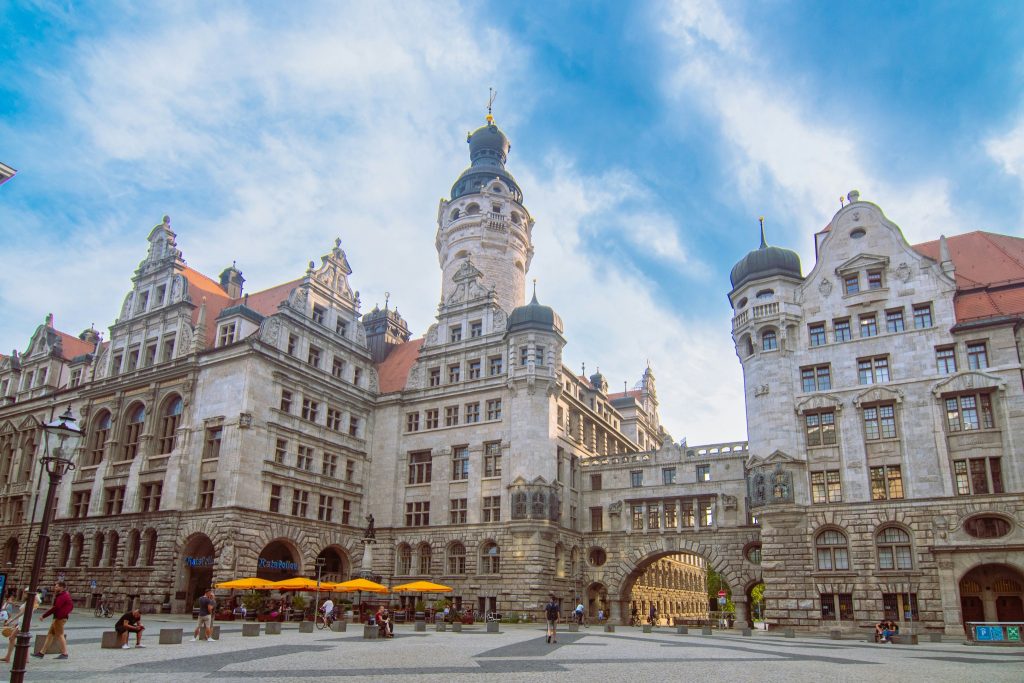
Estimated Monthly Cost of Living for a Family of Four (2025)
Using Leipzig or Heidelberg as mid-sized, family-friendly cities for the model:
- Furnished 3-bedroom apartment: €1,300–€1,800
- Groceries: €900–€1,000
- Utilities: €250
- Internet and phones: €100
- Public transport (family): €150–€200
- Health insurance (private or public, family): €400–€600
- Entertainment and outings: €300
Total monthly cost: €3,400–€4,000
Note: These are average estimates and may vary based on location, lifestyle, apartment type, and season. Berlin and Munich are more expensive, while smaller towns and East Germany tend to be more affordable.
Estimated One-Time & Annual Costs
Initial relocation costs for a family of four:
- One-way flights to Germany: €2,800
- Shipping household goods (half-container): €5,000
- Visa fees, apostilles, translations: €800–€1,000
- First and last month rent + deposit: €3,000
Total initial move-in cost: €11,000–€12,000
Annual roundtrip travel back to the U.S.:
- Estimated cost: €4,000
Total estimated first-year cost: €56,800
Estimated yearly cost after that: €44,000–€48,000
Advantages for Digital Nomad Families
Free or low-cost higher education
Germany is famous for its virtually free public universities — yes, even for international students. If you have older children or plan to stay long-term, this could mean tens of thousands in savings.
High-quality public services
From public transportation to libraries to childcare programs, Germany offers some of the best public infrastructure in Europe. Healthcare is reliable and efficient, and families with dependents are well supported.
Progressive and inclusive
Germany is one of the most LGBTQ+ inclusive countries in Europe. It also offers extensive support for people with disabilities and neurodivergent individuals, including integration aides in schools and therapy options through public health.
Disadvantages
Bureaucracy and complexity
Germany’s Freelance Visa application is complex, especially in larger cities like Berlin where processing times are long. You’ll need to provide detailed business plans, signed client contracts, proof of income, and professional qualifications.
Higher upfront paperwork
If you’re self-employed, registering your business, dealing with taxes, and securing insurance can be time-consuming. It’s recommended to work with a relocation advisor or visa agency.
BEST FOR: Families who want long-term residency options, excellent public services, and nearly free education — and who are willing to deal with some red tape to get there.
The Netherlands: Progressive Living with a Strong Family Focus
When exploring the best digital nomad visas for families in Europe, the Netherlands quickly stood out. Cities like Utrecht, The Hague, and Eindhoven offer a quieter pace of life and more affordable housing than Amsterdam, while still providing top-notch infrastructure, reliable public transportation, and strong international communities. What makes this country shine for families is its emphasis on work-life balance, safety, and inclusivity — values that are reflected in everything from school systems to public spaces. The Netherlands is often ranked as one of the best countries to raise children, thanks to its progressive mindset and high quality of life.

Although there’s no official digital nomad visa with dependents, freelancers and self-employed individuals can apply for the Self-Employed Residence Permit. To qualify, you’ll need to prove that your business or freelance work offers economic or cultural value to the Netherlands. This typically means showing detailed contracts, a portfolio, and evidence of consistent income — making it a more structured but achievable path for families who work independently and meet the criteria.
The Netherland’s Self-Employed Residence Permit: Key Details for Families
- Income Requirement: No official minimum, but realistically around €2,000–€2,500/month for a single adult, and ideally €3,500–€4,000/month to support a family
- Visa Duration: 2 years (renewable); path to permanent residency after 5 years
- Bring Dependents: Yes — partners and children can apply for residence permits as family members
- Healthcare: Private insurance is mandatory when you arrive; after registration, you’re required to join the Dutch public health system
- Internet Speed: 200–500 Mbps (among the fastest and most reliable in Europe)
- Education:
- Public universities: €6,000–€12,000/year for non-EU international students, depending on the program and university
- Public schools are free and include bilingual or international programs in larger cities
- Excellent inclusive education policies for neurodivergent students, with support programs and integration resources
- Pet-Friendly Factor: The Netherlands is very welcoming to pets, especially dogs. Most landlords accept pets with prior approval, and relocating with animals is straightforward as long as you meet EU import requirements. Expect travel costs of around €700–€1,000 per pet, depending on their size and airline.

Estimated Monthly Cost of Living for a Family of Four (2025)
Using a mid-sized city like Utrecht or Eindhoven as our model:
- Furnished 3-bedroom apartment: €1,700–€2,200
- Groceries: €1,000–€1,200
- Utilities: €250
- Internet and phones: €100
- Transportation (bikes, public transport): €150
- Health insurance (family plan): €450–€600
- Entertainment, dining, and extras: €300–€400
Total monthly cost: €3,950–€4,750
Note: These are average estimates and may vary based on location, lifestyle, apartment type, and season. Amsterdam is significantly more expensive than other cities.
Estimated One-Time & Annual Costs
Initial relocation costs for a family of four:
- Flights to The Netherlands: €3,000
- Shipping household items (half-container): €5,000
- Visa fees, translation, legal costs: €1,200
- First and last month rent + deposit: €4,000
Total initial move-in cost: €13,200
Annual roundtrip travel back to the U.S.:
- Estimated cost: €4,000
Total estimated first-year cost: €65,600
Estimated yearly cost after that: €50,000–€56,000
Advantages for Digital Nomad Families
Safe, walkable, and bike-friendly cities
Whether it’s a small town or a bigger city like The Hague, you’ll find cities built for families — with parks, public transport, and schools within walking or biking distance. Kids can safely get around without needing a car.
Top-quality education and inclusion
The Dutch school system is consistently ranked among the best in Europe. Public education is free, and universities are world-class. Families with LGBTQ+ youth or kids with disabilities will find a welcoming, supportive environment and robust school integration policies.
Cultural openness and work-life balance
The Netherlands is consistently ranked as one of the happiest countries in the world — and it shows. Working hours are reasonable, family life is prioritized, and communities are diverse and inclusive.
Disadvantages
Strict visa requirements and evaluation system
The self-employed visa is not as straightforward as Spain or Portugal’s digital nomad visas. Your professional background, business plan, and client contracts will be carefully assessed for economic value to Dutch society.
High cost of living in major cities
Amsterdam in particular is expensive. Housing can be difficult to secure, and prices are significantly higher than other parts of the country. However, smaller cities offer more affordable options with great quality of life.
BEST FOR: Families seeking excellent education, strong public infrastructure, and a progressive culture with a solid long-term path to residency.
Austria: A High-Quality Life in the Heart of Europe
Austria might not be the first country that comes to mind when researching the best digital nomad visas for families in Europe, but it absolutely deserves a spot on the list. With its clean, well-organized cities, incredibly safe environment, universal healthcare, and free public education — including tuition-free universities for international students — Austria offers many of the things families like mine are looking for. Cities like Graz, Linz, and Vienna are not only walkable and easy to navigate, but they also provide inclusive spaces, reliable infrastructure, and a high quality of life. The more I looked into it, the more Austria started to feel like a real option for our next chapter.

While Austria doesn’t have a traditional digital nomad visa with dependents, it does offer a strong pathway for remote freelancers and consultants through the Red-White-Red Card for Self-Employed Key Workers. This visa is aimed at individuals whose work provides measurable economic value to Austria — and while it requires more documentation than some other programs, it offers excellent long-term security, especially for families who want to settle in a place that feels stable, structured, and welcoming.
Austira’s Red-White-Red Card for Self-Employed Key Workers: Key Details for Families
- Income Requirement: No official fixed monthly minimum, but your business activity must show economic benefit to Austria. Typically, a stable income of at least €2,500–€3,000/month is expected for individuals, with higher income required to support dependents.
- Visa Duration: 2 years (initial), renewable with a path to permanent residency after 5 years
- Bring Dependents: Yes — spouses and children can be included in the application or apply for family reunification
- Healthcare: Austria’s universal healthcare system is among the best in Europe. Once registered, residents access high-quality public medical care.
- Internet Speed: 100–250 Mbps; very reliable across both cities and smaller towns
- Education:
- Public universities: Free or low tuition (~€1,500/year for non-EU international students)
- Public schools: Free and high-quality; some bilingual and international programs available in urban areas
- Excellent support systems for children with special needs or neurodivergence, including early intervention programs and inclusive classrooms
- Pet-Friendly Factor: Austria is very pet-friendly, with plenty of housing options that allow dogs and cats. Bringing pets into the country from the U.S. is relatively simple with the proper health certificate and microchip, and travel costs typically range from €700–€1,200 per pet.
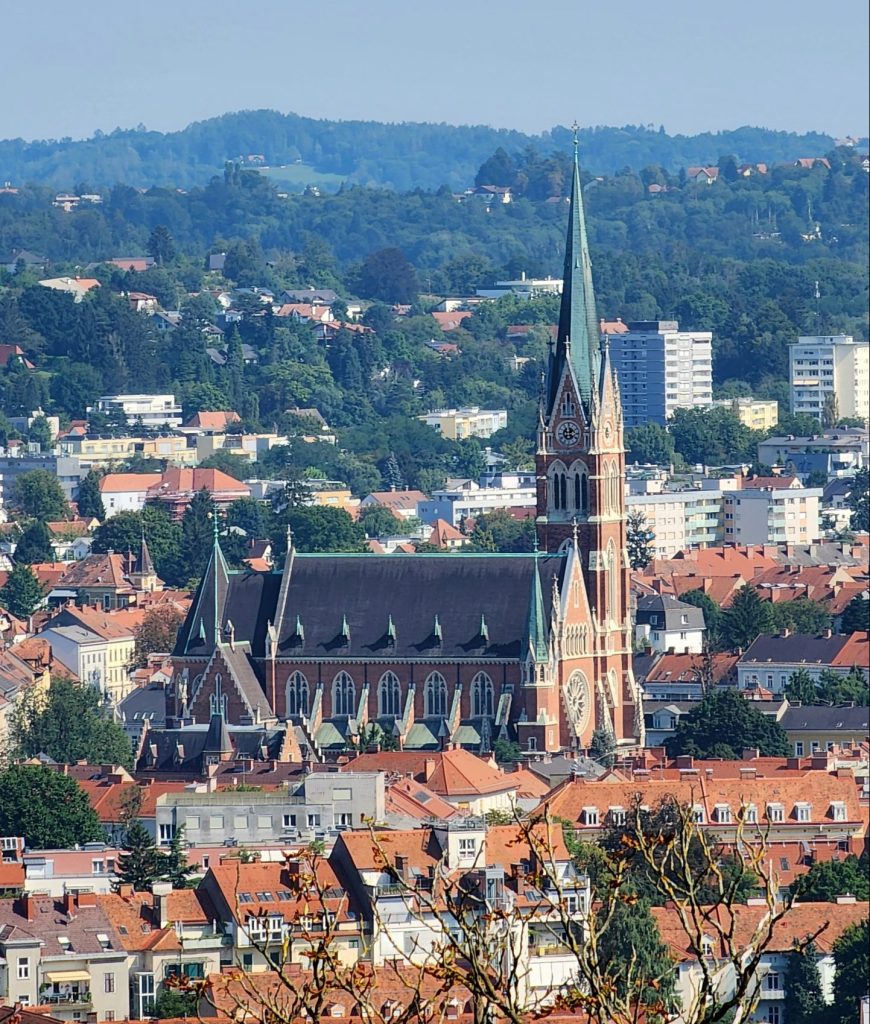
Estimated Monthly Cost of Living for a Family of Four (2025)
Using Graz or Linz as more affordable family-oriented cities:
- Furnished 3-bedroom apartment: €1,300–€1,700
- Groceries: €850–€1,000
- Utilities: €250–€300
- Internet and phones: €100
- Transportation (public): €120
- Health insurance (family): ~€400
- Entertainment, dining, and leisure: €300–€400
Total monthly cost: €3,300–€4,200
Note: These are average estimates and may vary based on location, lifestyle, apartment type, and season. Vienna is the most expensive city, while other regions offer better value.
Estimated One-Time & Annual Costs
Initial relocation costs for a family of four:
- Flights to Austria: €3,000
- Shipping household items (half-container): €5,000
- Visa fees, translations, legal paperwork: €1,000
- First and last month rent + deposit: €3,000
Total initial move-in cost: €12,000
Annual roundtrip travel back to the U.S.:
- Estimated cost: €4,000
Total estimated first-year cost: €57,600
Estimated yearly cost after that: €44,000–€50,000
Advantages for Digital Nomad Families
Excellent quality of life for families
Austria consistently ranks in the top 10 countries worldwide for quality of life. Families benefit from clean, safe cities, green spaces, and highly efficient public transportation. Children walk or bike to school safely, and family-focused policies make raising children more manageable and less stressful.
World-class healthcare and education
Austria’s healthcare system is publicly funded and accessible, and its schools (including universities) are free or low-cost. Whether your kids are small or entering college, Austria’s education system is a huge plus.
Strong social inclusion and public services
The Austrian government prioritizes inclusion, with extensive support services for children with disabilities or developmental delays. The country is also LGBTQ+ inclusive, especially in cities like Vienna and Salzburg, making it a safe and accepting place for diverse families.
Disadvantages
More competitive visa process
The Red-White-Red Card is more complex to qualify for than standard digital nomad visas. You’ll need a solid business plan and proof that your services are needed in Austria. Approval can take longer, and there is no “one-size-fits-all” minimum income — it depends on your profession and the economic value of your work.
German language expectations
While English is widely spoken in many professional settings, daily life in Austria often requires at least basic German. This might be a challenge at first but could also be a great opportunity for your kids to learn a second language.
BEST FOR: Families who value safety, healthcare, and high-quality education — and are willing to navigate a more detailed visa process for long-term stability.
Slovenia: An Underrated Gem for Remote Working Families
If you’re searching for the best digital nomad visas for families in Europe, Slovenia might not be the first country that comes to mind — but it absolutely deserves a second look. Nestled between Italy, Austria, and Croatia, this small yet stunning country offers a high quality of life, breathtaking natural scenery, and some of the most affordable living costs in Central Europe. For families working remotely, Slovenia offers a compelling mix of safety, sustainability, and simplicity — with a slower pace of life that feels more manageable than many of the larger European cities.

While Slovenia doesn’t currently offer a traditional digital nomad visa with dependents, it does have a self-employment residence permit. This visa allows freelancers and remote workers with international clients to live and work in the country legally, as long as they register as self-employed and meet the income and business criteria. For families like mine — looking for walkability, reliable healthcare, affordable living, and access to nature — Slovenia checks many of the most important boxes.
Slovenia’s Self-Employment Residence Permit: Key Details for Families
- Type of visa: Self-employment residence permit
- Income Requirement: No official minimum, but at least €1,500/month per adult is recommended to meet living standards (more for families)
- Visa Duration: 1 year, renewable; path to permanent residency after 5 years
- Bring Dependents: Yes — dependents can apply with you for residence permits
- Healthcare: Public healthcare available after registering; private insurance required for initial approval
- Internet Speed: 80–150 Mbps in cities
- Education:
- Public schools are free, with inclusive programs for neurodivergent children
- Public universities for international students: €3,000–€5,000/year (University of Ljubljana)
- Pet-Friendly Factor: Slovenia is welcoming to pets, and most rentals (especially outside the city center) are flexible with cats and dogs. Bringing pets from the U.S. is relatively easy with the right documentation, and costs typically range from €800–€1,200 per pet including airfare and vet paperwork.

Estimated Monthly Cost of Living for a Family of Four (2025)
Based on costs in Ljubljana (Slovenia’s capital and most family-friendly city):
- Furnished 3-bedroom apartment: €1,000–€1,300
- Groceries: €700–€850
- Utilities: €200–€250
- Internet and cell phones: €100
- Transportation (mostly public): €100–€150
- Entertainment, dining, and extras: €300–€400
- Private health insurance: €200/month initially
Total monthly cost: €2,600–€3,300/month
Note: These are average estimates and may vary based on location, lifestyle, apartment type, and season. Ljubljana is the most expensive city; smaller towns are significantly cheaper.
Estimated One-Time & Annual Costs
- Flights to Slovenia for family of four: €2,800–€3,200
- Shipping costs (half-container): €4,500–€6,000
- Rent deposit and initial setup: €2,500–€3,500
- Visa and paperwork fees: €1,000–€1,200
- One round-trip flight to the U.S. per year: €3,500–€4,000
First-year estimate: €50,000–€58,000
Subsequent years: €40,000–€45,000
Advantages for Digital Nomad Families
Affordable and high-quality lifestyle
Compared to neighboring Italy or Austria, Slovenia offers a similar quality of life at a lower cost. Rent, healthcare, and schooling are all budget-friendly.
Safe, green, and clean cities
Ljubljana is one of Europe’s greenest capitals — walkable, bikeable, and filled with parks and car-free zones. This is especially helpful for teens or neurodivergent children who benefit from peaceful environments and independence.
Great base for travel
Slovenia is centrally located in Europe, making weekend trips to Italy, Croatia, Austria, or Hungary incredibly easy and affordable.
Disadvantages
Not a true DNV
While it’s possible to apply as a self-employed remote worker, you’ll need to register with the tax authority and may have to open a sole proprietorship (though you don’t need to sell services locally).
Small digital nomad community
Because Slovenia is still under the radar, coworking spaces and remote work networking opportunities are more limited than in places like Spain or Portugal.
BEST FOR: Families who want a quiet, green, and safe country with good education and healthcare — and who meet the requirements to apply as remote self-employed professionals.
Croatia: A Hidden Gem for Remote Families on a Budget
Croatia has quickly become one of the best countries for digital nomad visas in Europe — and it’s especially attractive for families looking for a safe, affordable, and scenic place to call home. Its official Digital Nomad Residence Permitallows non-EU citizens to live in Croatia while working remotely for foreign clients or employers. What makes this visa especially appealing for families is that digital nomads are not taxed on foreign income, which is a rare benefit and can help stretch your budget further than in many other EU countries.
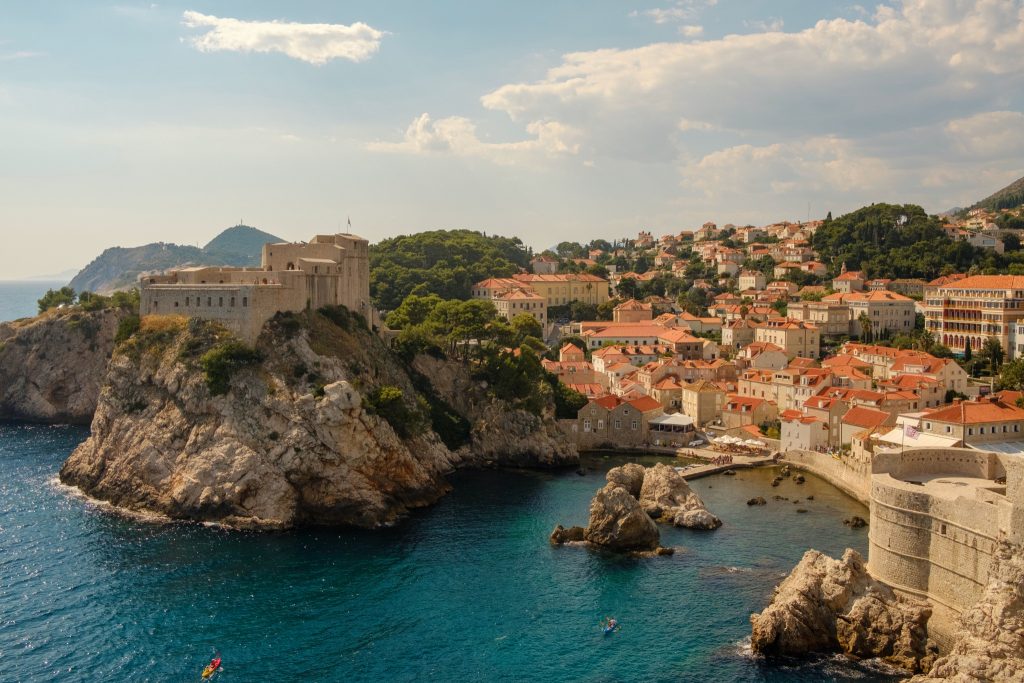
A family vacation to Croatia has been our travel bucket list for a while so it’s no surprise that for us, Croatia stood out early in our search for family-friendly digital nomad visas. The slower pace of life, access to the coast, and affordability compared to Western Europe immediately caught our attention. Cities like Zadar, Split, and Rijeka offer a wonderful mix of walkability, safety, and cultural richness, while also providing enough infrastructure to support remote work and day-to-day family life. Plus, the visa process is fairly straightforward and allows for dependents, so you can apply as a family without needing to start a business or navigate complex freelance visa requirements.
Croatia’s Digital Nomad Residence Permit: Key Details for Families
- Type of visa: Digital Nomad Residence Permit
- Income Requirement: €2,700/month (or €32,000/year), plus 10% per dependent
- Visa Duration: 1 year, non-renewable (must leave and reapply after expiration)
- Bring Dependents: Yes — family members can apply with you
- Healthcare: Must purchase private health insurance (local or international)
- Internet Speed: 50–150 Mbps in cities
- Education:
- Public schools are free and decent, but Croatian is the main language
- Private and international school options are limited and may be expensive
- No special programs available in English for neurodivergent youth in most cities
- Pet-Friendly Factor: Croatia is a pet-loving country, and bringing dogs or cats from the U.S. is relatively simple with the right health certificates and microchip. Many rentals allow pets, especially long-term leases, though some may require an additional deposit; expect travel costs per pet to range from €900–€1,300 depending on airline and route.

Estimated Monthly Cost of Living for a Family of Four (2025)
Based on living in Zadar, a coastal city with a growing expat and digital nomad community:
- Furnished 3-bedroom apartment: €1,000–€1,400
- Groceries: €700–€850
- Utilities: €200–€250
- Internet and mobile phones: €80–€100
- Transportation: €100–€150
- Entertainment and dining: €300–€400
- Private health insurance: €250/month (family plan)
Total monthly cost: €2,600–€3,400/month
Note: These are average estimates and may vary based on location, lifestyle, apartment type, and season. Coastal tourist cities like Dubrovnik are more expensive.
Estimated One-Time & Annual Costs
- Flights to Croatia for family of four: €2,800–€3,500
- Shipping costs (half-container): €4,000–€5,500
- Rent deposit and apartment setup: €2,500–€3,000
- Visa and paperwork fees: €500–€800
- One round-trip flight to the U.S. per year: €4,000
First-year estimate: €46,000–€54,000
Subsequent years: €38,000–€45,000 (requires reapplying from outside Croatia)
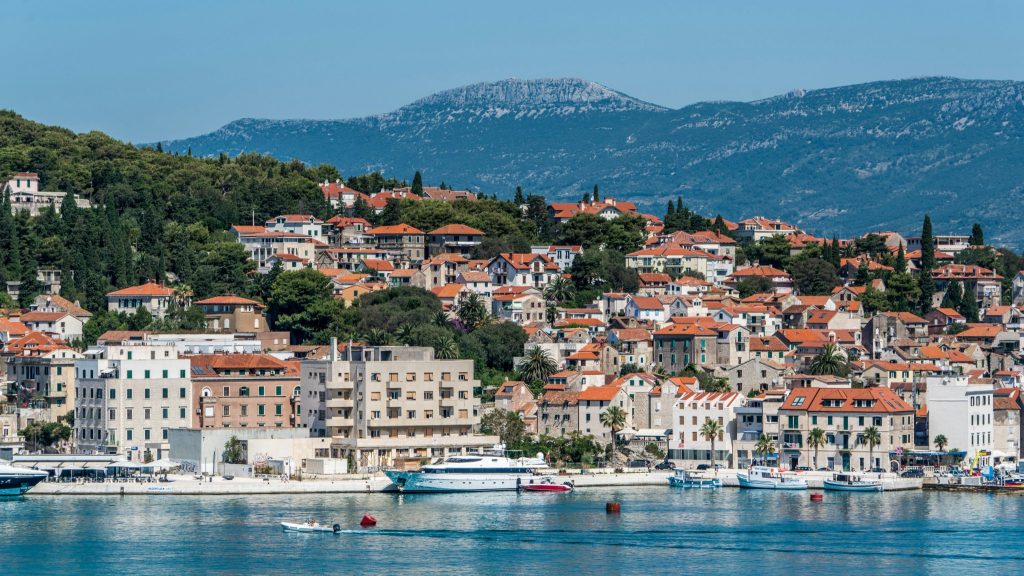
Advantages for Digital Nomad Families
No local taxes on foreign income
This is one of the biggest perks — as long as your income comes from outside Croatia, you won’t owe taxes locally.
Affordable coastal living
Compared to Western Europe, Croatia offers incredible value, especially in off-season cities like Rijeka and Zadar. Rent, food, and services are much cheaper.
Natural beauty and Mediterranean lifestyle
From islands and beaches to mountains and waterfalls, Croatia offers outdoor adventure for kids and adults alike.
Disadvantages
Non-renewable visa
You can only stay for 12 months. After that, you must leave and reapply, which creates uncertainty for families looking for long-term stability.
Limited English-speaking schools and services
Unless you’re in Zagreb or Split, international schooling and support for kids with disabilities may be harder to access.
Bureaucracy can be tricky
Processing times can be slow, and some local offices aren’t familiar with digital nomad visa rules — so patience is required.
BEST FOR: Budget-conscious families with younger kids or those homeschooling, who want coastal living, low taxes, and don’t need long-term residency right away.
Belgium: A Stable, Structured Option for Remote Work Families
Belgium might not be the flashiest country on the list, but when it comes to stability, excellent healthcare, and top-tier education, it’s easily one of the best family-friendly countries for digital nomads in Europe. While Belgium doesn’t offer a traditional digital nomad visa, it does allow non-EU freelancers to apply for a self-employed residence permit(called a Professional Card). This option gives remote workers and independent contractors the legal right to live in Belgium while working with foreign clients — as long as they can demonstrate the value of their work and meet the country’s requirements.
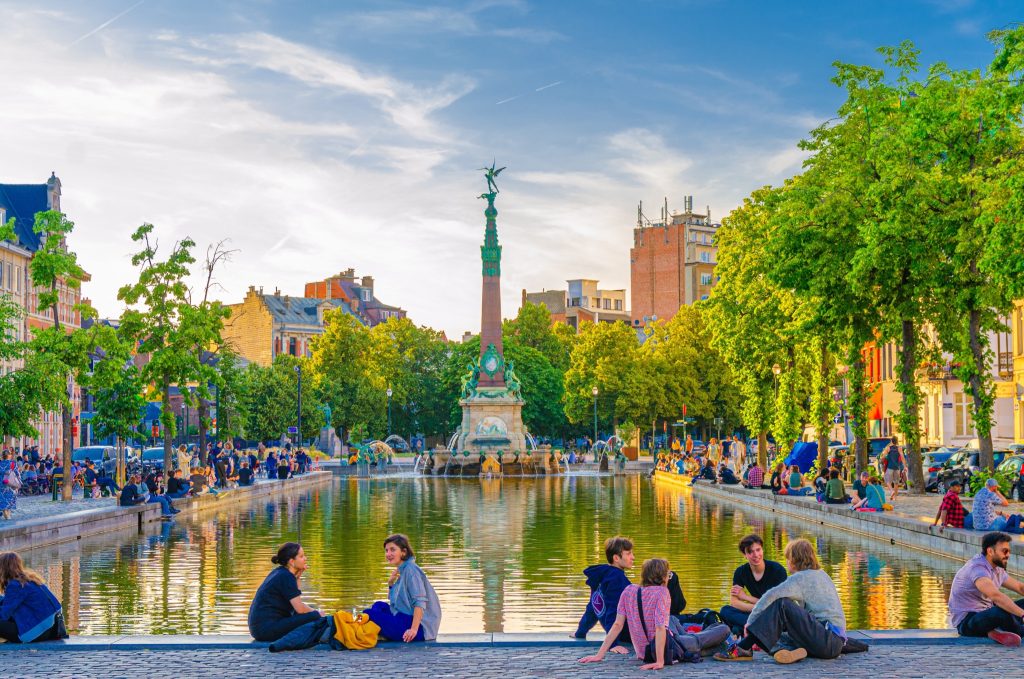
For families like mine — juggling the realities of raising teens, working remotely, and planning for long-term stability — Belgium offers a lot of practical advantages. Cities like Brussels, Ghent, and Leuven are known for their walkability, reliable public transportation, and international schools. You’ll also find a strong sense of order and safety, which is ideal for families navigating a new environment. Belgium is consistently ranked as one of the most inclusive and family-oriented countries in Europe, making it a great choice for those who value equality, access to healthcare, and multilingual education.
Belgium’s Self Employed Residence Permit: Key Details for Families
- Type of visa: Self-employed residence permit (Professional Card)
- Income Requirement: No fixed amount, but applicants must prove the activity is viable and will support their household (~€2,000–€2,500/month is considered reasonable)
- Visa Duration: 1–5 years, renewable
- Bring Dependents: Yes — children and spouses can be included
- Healthcare: Excellent public system; you’re required to register once you receive residency
- Internet Speed: 100–300 Mbps
- Education:
- Free public schools, many with French, Dutch, or bilingual options
- International schools in Brussels, Ghent, and Antwerp (tuition ~€10,000/year)
- Public universities for international students: €2,000–€4,500/year
- Pet-Friendly Factor: Belgium allows pets to enter with proper microchipping, vaccinations, and health certificates. It’s relatively easy to find long-term rentals that allow pets, especially outside major city centers; flying a pet from the U.S. typically costs between €900–€1,300 per animal depending on the airline and cargo option

Estimated Monthly Cost of Living for a Family of Four (2025)
Based on costs in
Ghent and Leuven (family-friendly, mid-sized cities near Brussels):
- Furnished 3-bedroom apartment: €1,300–€1,800
- Groceries: €800–€950
- Utilities: €250–€300
- Internet and mobile phones: €100
- Transportation (public transit): €150–€200
- Entertainment and dining: €400–€500
- Private health insurance (initial months): €200/month
Total monthly cost: €3,200–€4,100/month
Note: These are average estimates and may vary based on location, lifestyle, apartment type, and season. Brussels is the most expensive; smaller cities like Leuven are more budget-friendly.
Estimated One-Time & Annual Costs
- Flights to Belgium for family of four: €2,500–€3,000
- Shipping costs (half-container): €4,500–€6,000
- Rent deposit and move-in setup: €3,000–€3,500
- Visa and professional card application fees: ~€350–€450 per adult
- Round-trip flight to U.S. annually: €3,500–€4,000
First-year estimate: €52,000–€60,000
Subsequent years: €40,000–€48,000
Advantages for Digital Nomad Families
Safe, structured, and inclusive
Belgium is one of the safest countries in Europe, with a strong focus on rule of law, healthcare, and education. It’s also one of the most LGBTQ+-inclusive.
Multilingual society
Many Belgians speak English, French, and Dutch. Public services and schools often offer multilingual support, easing the transition for international families.
Top-notch infrastructure
Reliable public transportation, fast internet, and proximity to major cities like Paris and Amsterdam make travel and daily life smooth and efficient.
Disadvantages
Complex bureaucracy
Applying for a professional card can involve a lot of paperwork and slow processing times. You may need to demonstrate a business plan and financial projections, even if you’re freelancing for foreign clients.
High taxes
Belgium has some of the highest personal income taxes in Europe. However, if your income is fully foreign-sourced and you’re classified as a non-resident for tax purposes, you may avoid some of these — consult a tax advisor.
BEST FOR: Families looking for a safe, multilingual, and highly organized country with excellent education and healthcare — and who are willing to navigate some red tape for long-term stability.
Italy: Culture, Family Life, and Freelance Opportunity
Italy often captures the imagination with its rich culture, delicious cuisine, and scenic towns—but it also offers real potential for remote workers looking to relocate with their families. While Italy does not offer a traditional digital nomad visa, it has a self-employment visa (“lavoro autonomo”) that can be used by freelancers and independent contractors working with clients outside Italy. The process is more bureaucratic than in some other European countries, but for families who meet the requirements, Italy can offer an incredible quality of life.

Cities like Bologna, Turin, and Florence offer vibrant international communities, reliable healthcare, and access to public and international schools—without the sky-high rents of Rome or Milan. Families looking for safety, slower living, walkability, and cultural richness will find Italy to be a deeply fulfilling place to raise kids. Plus, the food is amazing, the weather is pleasant in most regions, and the pace of life encourages more time together as a family.
Italy’s Self-Employment Visa: Key Details for Families
- Type of visa: Self-employed visa (lavoro autonomo) Income Requirement: Must show adequate income to support family; generally around €8,500/year per person plus proof of work activity
- Visa Duration: 1 year, renewable
- Bring Dependents: Yes—spouses and children can be included
- Healthcare: Families must get private insurance initially; after registering residency, you can access public healthcare
- Internet Speed: 50–200 Mbps depending on city
- Education:
- Public education is free and well-structured
- Some international schools available in larger cities (tuition ~€7,000–€15,000/year)
- Public universities for international students: ~€1,000–€4,000/year in cities like Florence and Bologna
- Public education is free and well-structured
- Pet-Friendly Factor: Italy allows pets to enter with proper paperwork and vaccinations. Finding rentals that allow pets is relatively easy, especially outside of major cities; expect to pay €900–€1,400 to fly a large dog from the U.S. depending on airline and cargo route.

Estimated Monthly Cost of Living for a Family of Four (2025)
Based on costs in Bologna and Turin (mid-sized cities with good infrastructure):
- Furnished 3-bedroom apartment: €1,200–€1,700
- Groceries: €700–€900
- Utilities: €250–€300
- Internet and mobile phones: €90–€110
- Transportation (public transit): €120–€180
- Entertainment and dining: €350–€450
- Private health insurance (initial months): €180/month
Total monthly cost: €3,000–€4,000/month
Note: These are average estimates and may vary based on location, lifestyle, apartment type, and season. Rome and Milan will be more expensive, while rural areas and smaller cities are more budget-friendly.
Estimated One-Time & Annual Costs
- Flights to Italy for family of four: €2,500–€3,500
- Shipping costs (half-container): €4,000–€5,500
- Rent deposit and move-in setup: €2,800–€3,500
- Visa application and permit fees: €300–€500 per adult
- Round-trip flight to U.S. annually: €3,500–€4,500
First-year estimate: €50,000–€58,000
Subsequent years: €40,000–€46,000
Advantages for Digital Nomad Families
Family-centered culture
Italy places a high value on family, making it easy to integrate socially and find services that support children and parents alike.
Rich cultural and educational experiences
From Roman ruins to world-class art museums, Italy offers constant educational enrichment that can enhance your child’s learning and worldview.
Access to healthcare and education
Once you have residency, Italy’s public healthcare system is affordable and widely available. Education is free, and universities are affordable compared to the U.S.
Disadvantages
Bureaucracy and long processing times
The visa application process is paper-heavy and can take months. Expect a lot of back and forth with government offices.
Income proof and limitations
You must show consistent income and contracts for remote work; informal or gig-based freelancers may struggle to meet the requirements.
BEST FOR: Families who want to immerse themselves in Italian culture and value education, public services, and family-centered living—and who have the patience to navigate a slower bureaucracy.
Moving to Europe With Pets
Bringing pets with you is possible in all of the countries we’ve covered, but it’s important to plan ahead. That is why I wanted to add some more information including some challenges we have run into with two large dogs.

If you’re moving with pets, especially large dogs, be prepared for some challenges. Finding long-term rentals that accept animals—especially in popular cities like Valencia, Barcelona, Lisbon, and Amsterdam—can be difficult. Cats are usually easier to accommodate, while large dogs may require more negotiation. Expect to pay an additional deposit or monthly pet fee, and consider using a relocation or rental agency to help with the search. Some countries and rental properties may also restrict specific breeds, so always verify before booking.
Also, research airlines carefully: large dogs must travel in cargo, and safety conditions vary.
What Is the Best European Country for Families with Remote or Freelance Work?
Choosing the best European country for families who work remotely or freelance depends on your family’s priorities: whether it’s cost of living, education, inclusivity, healthcare, or lifestyle. Based on everything we’ve researched and experienced, here are three standout choices:

-
Best Overall: Spain – With its accessible digital nomad visa, strong public healthcare system, inclusive environment, and walkable cities like Valencia, Spain is one of the most well-rounded choices for families. The fast-track to citizenship for Latin Americans is also a major plus for some.
-
Best for Long-Term Stability and Education: Germany – Though the application process can be complex, Germany offers nearly free university education (even for international students), world-class healthcare, and a strong infrastructure that supports family life.
-
Best for Affordability and Safety: Portugal – Portugal combines a relatively straightforward visa process with a lower cost of living, excellent healthcare, and a welcoming attitude toward immigrants and diverse families.
- Best for Educational and Cultural Opportunities: France — Offers excellent public services, low university tuition even for international students, and a structured but enriching lifestyle that works well for families with kids and teens.
Of course, the right choice will depend on your family’s unique needs — and what you’re looking to build for your future.
No matter where you go, relocating to Europe as a remote-working family is no longer just a dream — it’s a very real path to a safer, more balanced, and more connected life. Whether you’re looking for better healthcare, public services, walkable cities, or just a place where your family can breathe easier, this guide is here to help you find your starting point.
- Cranberry Brie Cake Grazing Board (An Elegant Holiday Cheese Centerpiece) - December 19, 2025
- Easy Cranberry Cocktails You Can Make All Year - December 18, 2025
- Christmas Mulled Wine (A Classic Holiday Mulled Wine Recipe) - December 18, 2025


